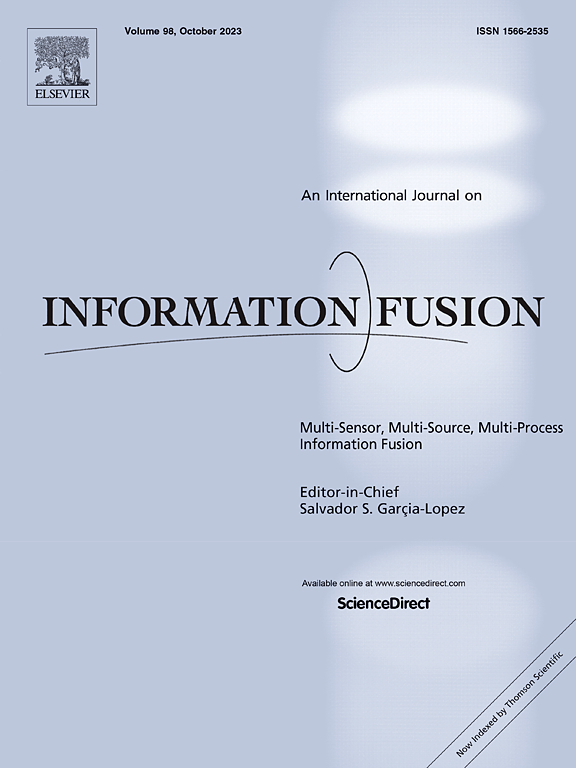PGA-DRL: Progressive graph attention-based deep reinforcement learning for recommender systems
IF 14.7
1区 计算机科学
Q1 COMPUTER SCIENCE, ARTIFICIAL INTELLIGENCE
引用次数: 0
Abstract
Advanced graph models, including Graph Convolutional Networks (GCNs) and Graph Attention Networks (GATs), have demonstrated their effectiveness in capturing intricate user-item interactions. However, their integration into Deep Reinforcement Learning (DRL)-based Recommender Systems (RSs) remains relatively underexplored. To address this gap, we propose PGA-DRL, a Progressive Graph Attention-Based DRL model that incrementally fuses GCN and GAT representations via concatenation, effectively combining their complementary strengths to enhance feature representation within an Actor-Critic (AC) framework. This progressive integration refines both global and localized user-item interaction patterns, Specifically, global patterns capture broader user preferences across the entire graph, and localized patterns focus on specific, detailed interactions between closely connected nodes, enabling a more comprehensive understanding of the recommendation environment. We evaluate our approach using extensive experiments on multiple benchmark datasets, including ML-100K, ML-1M, Amazon Subscription Boxes, Amazon Magazine Subscriptions, and ModCloth, employing standard ranking metrics such as Precision@10, Recall@10, NDCG@10, MRR@10, and Hit@10. The experimental results reveal that PGA-DRL outperforms state-of-the-art baselines, such as BPR, NeuMF, and SimGCL, achieving improvements in NDCG@10 and Recall@10. Our core contributions lie in bridging graph-based learning with reinforcement learning through a novel, efficient, and scalable fusion mechanism that enhances recommendation accuracy and ultimately improves user satisfaction. The source code for PGA-DRL is publicly available at https://github.com/RS-Research/PGA-DRL to enhance transparency and facilitate future research.
PGA-DRL:基于渐进式图注意的深度强化学习推荐系统
高级图模型,包括图卷积网络(GCNs)和图注意网络(GATs),已经证明了它们在捕获复杂的用户-项目交互方面的有效性。然而,它们与基于深度强化学习(DRL)的推荐系统(RSs)的集成仍然没有得到充分的探索。为了解决这一差距,我们提出了PGA-DRL,这是一种基于渐进式图注意力的DRL模型,它通过连接逐渐融合GCN和GAT表示,有效地结合它们的互补优势,以增强Actor-Critic (AC)框架内的特征表示。这种渐进式集成改进了全局和本地化的用户项交互模式,具体来说,全局模式捕获整个图中更广泛的用户偏好,本地化模式关注紧密连接节点之间特定的、详细的交互,从而能够更全面地理解推荐环境。我们通过在多个基准数据集(包括ML-100K、ML-1M、Amazon Subscription Boxes、Amazon Magazine Subscriptions和ModCloth)上进行大量实验来评估我们的方法,并采用Precision@10、Recall@10、NDCG@10、MRR@10和Hit@10等标准排名指标。实验结果表明,PGA-DRL优于最先进的基线,如BPR、NeuMF和SimGCL,在NDCG@10和Recall@10上实现了改进。我们的核心贡献在于通过一种新颖、高效、可扩展的融合机制,将基于图的学习与强化学习连接起来,从而提高推荐的准确性,最终提高用户满意度。PGA-DRL的源代码可在https://github.com/RS-Research/PGA-DRL上公开获得,以提高透明度并促进未来的研究。
本文章由计算机程序翻译,如有差异,请以英文原文为准。
求助全文
约1分钟内获得全文
求助全文
来源期刊

Information Fusion
工程技术-计算机:理论方法
CiteScore
33.20
自引率
4.30%
发文量
161
审稿时长
7.9 months
期刊介绍:
Information Fusion serves as a central platform for showcasing advancements in multi-sensor, multi-source, multi-process information fusion, fostering collaboration among diverse disciplines driving its progress. It is the leading outlet for sharing research and development in this field, focusing on architectures, algorithms, and applications. Papers dealing with fundamental theoretical analyses as well as those demonstrating their application to real-world problems will be welcome.
 求助内容:
求助内容: 应助结果提醒方式:
应助结果提醒方式:


